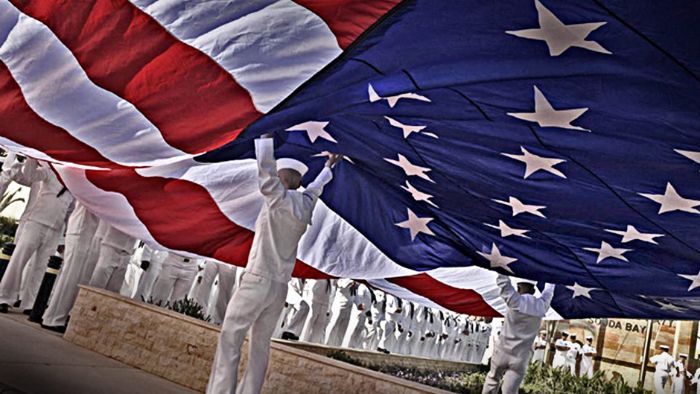Navy customs continue to shape the Navy of today Traditions
Many of the values and principles that guide today’s Sailors can be attributed to customs and traditions that began in the Navy long ago. From the playing of the Navy Hymn to the ranks and ratings identified on Navy uniforms, the practices, terminology and etiquette that has been handed down from one generation of servicemembers to the next are as powerful as the ships they travel on.
Knowing that you’re part of something bigger than yourself provides stability, camaraderie and increased self-awareness. Customs and traditions build a bridge between young and old; past and present. They reflect positively on the Sailor, the Navy and the United States, which is why they’re so valued in the military and, in particular, the Navy.
Uniforms
Polished and professional, those who wear the Navy uniform stand tall and proud whether in their blues, khakis or service dress whites. There are uniforms that serve practical purposes. There are uniforms that help Enlisted Sailors and Officers easily identify one another at a glance. And there are uniforms that are among the most recognizable and striking symbols of honor in the military today.
Rank/Ratings
One look at a servicemember’s cap, sleeve or chest can tell you a great deal about the role that individual serves in the Navy. Various badges and insignia are worn in different places on uniforms to identify Officer ranks and Enlisted ratings. Even the basic Navy colors of blue and gold have meaning: blue represents the ocean and seas; gold is the color of integrity and valor.
Navy Hymn
Few songs have the legacy of the United States Navy Hymn. The Rev. William Whiting originally wrote the Navy Hymn in 1860 after surviving a furious storm on the English coast. Inspired by the mighty force that nature can heap upon the sea, Rev. Whiting penned the ode, “Eternal Father, Strong to Save.”
One year later, the hymn was set to music. The first verse would soon be sung at the conclusion of each Sunday’s Divine Services at the U.S. Naval Academy in Annapolis — a practice that began in 1879 and continues today.
The words were changed several times over the years to reflect cultural shifts and changes in our society. It was the favorite hymn of President Franklin D. Roosevelt and was sung at his funeral. It also played as President John F. Kennedy’s body was carried up the steps of the capitol to lie in state. Both presidents served in the Navy. Today, “Eternal Father, Strong to Save” is used at funerals for those who served or were associated with the Navy.
Navy Terminology
There are many words and phrases in the English language that can trace their roots to nautical and, in some cases, to actual naval origins. Check out some of these terms and their meanings.
Beyond the general words and phrases that are part of nautical and naval culture, there are also many standard commands and orders that are routinely used in the Navy. Familiarize yourself with some of the more common examples.
 America's Navy
America's Navy
